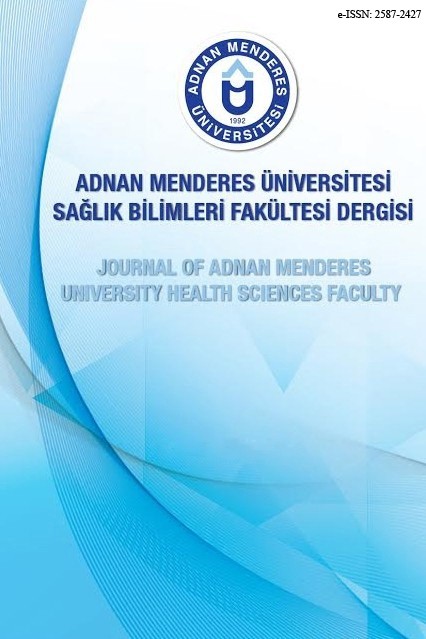YÜKSEK PROTEİNLİ DİYETLERİN METABOLİZMA ÜZERİNE ETKİSİ
Protein, karbonhidrat veya yağdan daha doyurucu olan yüksek proteinli diyetler (enerjinin% 25 - % 35'ü) ağırlık kaybı için sıklıkla kullanılmaktadır. Yüksek proteinli diyetler de genellikle karbonhidrat protein ile yer değiştirir ve doymuş yağda düşük veya yüksek olabilir. Her ne kadar karbonhidrat alımı azaldıkça serum trigliserid daha düşük olsa dahi yüksek yoğunluklu lipoprotein kolesterolü ve düşük yoğunluklu lipoprotein kolesterolü üzerindeki etkiler, karbonhidrat kısıtlamasına ve doymuş yağ alımına güçlü bir şekilde bağlıdır ve bazı durumlarda, kilo kaybına rağmen yoğunluk lipoprotein kolesterolü yükselebilmektedir.Bu bulgulardan hareketle konunun uzmanları, kilo kaybı üzerine yüksek proteinli diyetlerin etkilerini araştırmaya başlamış yapılan çalışmalarda ise aşırı kilolu diyet proteini yüzdesini yükseltmeyi savunmuştur. Bu savunmanın gerçekliği hakkında makro besleyici durumun, vücut ağırlığı üzerindeki etkisi açısından yeterince kapsamlı ve uzun vadeli çalışmalar yapılamamıştır.Bu çalışmada literatürde mevcut bulgular incelenecek ve ileride daha kapsamlı çalışmalara yol göstermesi hedeflenmektedir.
Anahtar Kelimeler:
Yüksek proteinli diyet, kilo kaybı, beslenme, metabolizma
EFFECTS OF HİGH-PROTEİN DİETS ON METABOLİSM
High protein diets (25% - 35% of energy) that are more satisfying than protein, carbohydrate or fat are often used for weight loss. High protein diets are often replaced by carbohydrate protein and may be low or high in saturated fat. The effects on high-density lipoprotein cholesterol and low-density lipoprotein cholesterol are strongly dependent on carbohydrate restriction and saturated fat intake, even though serum triglyceride is lower as carbohydrate intake decreases, and in some cases, density lipoprotein cholesterol may rise despite weight loss. From these findings, experts argue that to increase the percentage of overweight dietary protein in studies that have begun to investigate the effects of high protein diets on weight loss. This argument has not been sufficiently comprehensive and long-term studies on the reality of macro-nutritional status, its impact on body weight. In this study, the findings in the literature will be investigated and in the future it is aimed to reach a more comprehensive study.
Keywords:
High protein diet, weight loss, nutrition, metabolism,
___
- 1. Nefti W, Darcel N, Fromentin G, Tomé D: Long term exposure to high protein diet or high fat diet have opposite effects on vagal afferent sensitivity to lumenal macronutrients and ip cholecystokinin. FASEB J 2007, 21:367.7
- 2. Due A, Toubro S, Skov AR, Astrup A. Effect of normal-fat diets, either medium or high in protein, on body weight in overweight subjects: a randomised 1-year trial. Int J Obes Relat Metab Disord 2004;28:1289-90.
- 3. Reddy ST, Wang CY, Sakhaee K, Brinkley L, Pak CY: Effect of low-carbohydratehigh-protein diets on acid–base balance, stone-forming propensity, and calcium metabolism. Am J Kidney Dis 2002, 40:265–274.
- 4. Gannon MC, Nuttall FQ: Amino acid ingestion and glucose metabolism–a review. IUBMB Life 2010, 62:660 668.
- 5. Robertson WG, Heyburn PJ, Peacock M, Hanes FA, Swaminathan R: The effect of high animal protein intake on the risk of calcium stone-formation in the urinary tract. Clin Sci (Lond) 1979, 57:285–288.
- 6. Lejeune MP, Westerterp KR, Adam TC, Luscombe-Marsh ND, Westerterp-Plantenga MS: Ghrelin and glucagon-like peptide 1 concentrations, 24-h satiety, and energy and substrate metabolism during a high-protein diet and measured in a respiration chamber. Am J Clin Nutr 2006, 83:89–94.
- 7. Axellsson, I., Effects of High Protein Intakes, Nestlé Nutr. Wworkshop Ser Pediatr. Program. 2006; 58:121-9; Discussion 129-31.
- 8. Yancy, W. et al. A Low-Carbohydrate, Ketogenic Diet Versus a Low-Fat Diet to Treat Obesity and Hyperlipidemia. Ann. Int. Med. 2004, vol. 140, No. 10; pp. 769-779.
- 9. Peret, J. et al. Metabolic Effects of High-Protein Diets in Zucker Rats. Metab. 1984, vol. 33; p.200-207.
- 10. Jacqmain, M., Doucet, E., Despres, JP., Bouchard C., Tremblay A., Calcium intake, body composition, and lipoprotein-lipid concentrations in adults, Am J Clin Nutr 2003, 77(6):1448-52.
- 11. Murakami K., Okubo H., Sasaki S., No relation between intakes of calcium and dairy products and body mass index in japanese women aged 18 to 20 y., Nutrition, 2006, 22(5): 490-5.
- 12. Parra P., Bruni G., Palou A., Serra F., (2008) Dietary calcium attenuation of body fat gain during high-fat feeding in mice, J Nutr Biochem 19(2):109-17.
- 13. Stern, L. et al. The Effects of Low-Carbohydrate Versus Conventional Weight Loss Diets in Severely Obese Adults: One Year Follow-up of a Randomized Trial. Ann. Int. Med. 2004, vol. 140, No. 10; pp. 778-786.
- 14. Foster, G. et al. A Randomized Trial of a Low-Carbohydrate Diet for Obesity. N. Eng. J. of Med. 2003, vol. 348; pp. 2082-2090.
- 15. Diepvens K, Haberer D, Westerterp-Plantenga M: Different proteins and biopeptides differently affect satiety and anorexigenic/orexigenic hormones in healthy humans. Int J Obes (Lond) 2008, 32:510–518.
- 16. Westerterp-Plantenga MSL-MN, Lejeune MPGM: Dietary protein, metabolism, and body-weight regulation: dose–response effects. Int J Obesity (Silver Spring) 2006, 30:S16–S23.
- 17. Stern, L. et al. The Effects of Low-Carbohydrate Versus Conventional Weight Loss Diets in Severely Obese Adults: One Year Follow-up of a Randomized Trial. Ann. Int. Med. 2004, vol. 140, No. 10; pp. 778-786.
- Yayın Aralığı: Yılda 3 Sayı
- Başlangıç: 2017
- Yayıncı: Aydın Adnan Menderes Üniversitesi
Sayıdaki Diğer Makaleler
KANSERİN ÖNLENMESİNDE ANTİOKSİDANLARIN ROLÜ
YÜKSEK PROTEİNLİ DİYETLERİN METABOLİZMA ÜZERİNE ETKİSİ
ÇOCUKLARI HASTANEDE YATAN ANNELERİN ETKİLENME DURUMLARI
VÜCUT KİTLE İNDEKSİNİN AYAK TABAN BASINÇ DAĞILIMINA ETKİSİ
Neslihan ALTUNTAŞ YILMAZ, Fatma ERDEO, Ayşe Merve TAT, Hayriye ALP
DİYABET TEDAVİSİNDE KULLANILAN TAMAMLAYICI VE ALTERNATİF TEDAVİLER: LİTERATÜR DERLEMESİ
